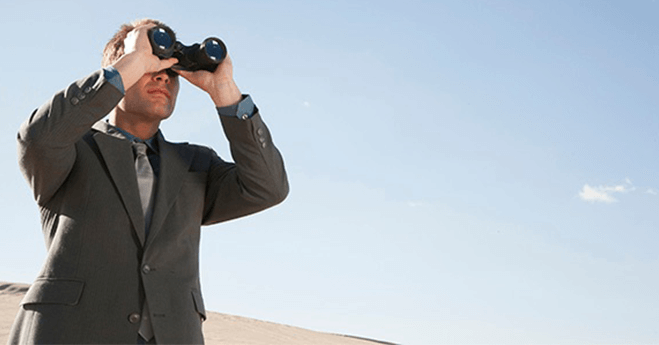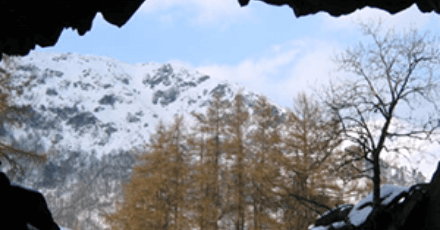Fighting for Clean Water with Water Stewardship

Over the past few years, businesses have started to see the implications that water-related risks have on their daily operations. The growing concern over water has reached policy-makers and non-governmental organizations around the world as they see the effects of water-related risks on cities and populations.
ESG: A Growing Interest for Business Investors

Many organizations are strategically choosing to become “greener” and socially responsible in their daily operations. Sustainability initiatives are serving to improve operational efficiency and are increasingly informing the purchasing decisions of customers and investors alike. Where competition between businesses is evident, companies are taking the necessary steps to stay ahead of their peers. Being environmentally sustainable and socially responsible is increasingly recognized as an essential element of corporate strategy, especially as regulations increase globally.
The “Greening” of the Food and Beverage Industry

As sustainability makes waves in the corporate world, members of the food and beverage industry have begun to follow suit and take the necessary steps to go green. A recent study by Ernst & Young shows that consumers are now more conscious and responsible when it comes to the products that they buy, especially the food they eat. As a result, more companies are appealing to a more health-conscious market by selling healthy, organic and sustainable goods to the community. The impact of climate change on the agriculture sector has also increased the pressure on the food and beverage industry to produce sustainable goods, even as the global population continues to grow. Food and beverage companies see the need to be sustainable in order to be more climate-resilient, since their operations are heavily dependent on the interaction of food, water and energy.
Plastic Bags: A Dangerous Convenience

Plastic bags are convenient and free to use, but their harmful impacts are finally being acknowledged. The use of plastic bags had been standard in many grocery and retail stores since the 1970s, but receiving a plastic bag for your purchased items is becoming increasingly rare in many cities.
Fashion Forward to Innovation with Sustainable Clothing

The fashion industry relies on creating new brands, new collections, and new product ranges every season to continuously drive growth and sales. According to a Deloitte report, season cycles have now shortened in the fashion industry, making major brands introduce new clothing styles almost every other week instead of the more traditional pace of every two seasons. This phenomenon has been dubbed “fast fashion,” which refers to the rapid production, consumption, and disposal of clothes every season. Major fashion brands use this business model due to its well-organized method of sourcing and production to help meet consumer demand for new styles at the right price.
Fighting the Game-Changer with Mitigation

Today’s climate-driven economy has forced us to be wary of climate change’s ongoing threats to various businesses in the public and private sectors. Undeniable evidence of climate change impacts can be felt all over the world.
Water Stewardship: Charting the Next Frontier on Sustainability

The last few years have brought an understanding of the imminent pressure of water-related risks to businesses around the globe. Policy-makers and non-government organizations (NGOs) are also realizing the global concern of water-related risks as rising population counts, accompanied by the economic growth of emerging markets, continue to trigger the growing demand for potable water and food.
The Carbon Footprint of Technology

Given the current focus of the market on sustainability and environmental impact, it will be interesting to see how gadgets with even lesser environmental impacts will be produced by future innovations and technological advancements.
Hosting Monarch Butterflies in Your Yard

The choices that we make on a daily basis can have a profound effect on our environment. Recently, my mom hired a landscape architect to spruce-up a very drab side yard and turn it into a relaxing garden. She wanted to replace a patch of sod with an eclectic mix of stone, bark, flowering plants, a fountain, a decorative bench and a rocking chair. These are the things one would expect to find in a quaint little Italian style garden.
Creating Resilient Cities Amidst Climate Change Risks

Businesses know the importance of sharing their environmental data; the collective information gathered helps bring about a solution towards mitigating climate change risks, lowering environmental impacts and increasing stakeholder confidence. The same premise applies to the cities where these businesses operate from and where employees of these businesses live.
The Hunter and the Hunted: Lead Poisoning of Bald Eagles

Unless you reside near a large body of water or one of the North American coast lines, it is not often that you will encounter a bald eagle (Haliaeetus leucocephalus) soaring high overhead. Also known as the American Eagle, this magnificent bird of prey is the second largest on the North American continent, as well as our National symbol of freedom. In addition to their selective habitat, the bald eagle also continues to recover from prior forms of human caused endangerment and remains protected under the Lacey Law and the Migratory Bird Treaty Act.
NASCAR’s Sustainability

NASCAR has taken several steps to make the sport exactly that – more sustainable. This blog provides a glimpse into the steps NASCAR has taken to make the sport “greener.”
More Than an Open Road

Climate Change Mitigation Makes Waves in the Corporate World

In the last decade, the impacts that climate change has brought upon us have become more and more compelling. With the increase of the Earth’s temperature, rising sea levels and melting polar ice caps, we can no longer deny the fact that the impacts and consequences of climate change is being felt all over the world. The recent United Nations Intergovernmental Panel on Climate Change (UN IPCC) supported these views and reported that the effects of climate change are due to worsen until the year 2050 if immediate action is not taken. The report also warned us that if we do not support climate change mitigation as soon as possible, then the constant burning of fossil fuels, deforestation and the increased growth of greenhouse gas (GHG) emissions will continue.
Nature: How Do You See Yourself?

When you think about the environment, where do you see yourself? Are you an outsider looking at the concept of your surroundings as if you were watching a movie unfold in a theatre? Or are you part of that movie – moving, creating, influencing, and actively living within it as an inseparable part of your surroundings?
Green Vehicles: Sustainability-On-Wheels

In this day and age of green technology, there is a wide range of selection for those of us who are considering the purchase or lease of a new eco-friendly vehicle. Compared to the last decade, a recent look at the new 2014 vehicle lineup reveals a larger selection of fuel-efficient, hybrid and electric vehicles. Electric cars have engines that run on electricity and do not require gasoline, while Hybrids use electricity for shorter distances but also have gasoline for long drives and high speeds. These eco-friendly cars come with many advantages to the consumers, such as: Fuel costs, energy security, tax benefits, less greenhouse gas emissions, faster commuting times and power efficiency.
Going Beyond Climate Change Adaptation through Environmental Risk Management

“We live in an era of man-made climate change”. This is what climate change consultant and co-chair of the United Nations Intergovernmental Panel on Climate Change (UN IPCC) Vicente Barros said in the report entitled Climate Change 2014: Impacts, Adaptation and Vulnerability. It is evident that the impacts brought about by climate change can be felt all over the world. The recent IPCC report discussed the repercussions of climate change as it affects people, economies and the Earth’s ecosystems.
Sustainability in Action: Going Green in the Food Sector

Greening is good! As sustainability and population growth continue to shape the global corporate realm, businesses coming from various industries are also expected to adjust with the trend. In particular, the food sector can make significant contributions in reducing resource consumption, wastage and carbon footprint.
Renewable Energy and Biological Issues

As the costs associated with oil and gas production begin to increase, both investors and consumers have begun to recognize the importance of cultivating alternative forms of energy. It is well-recognized that solar and wind energy are renewable resources that are readily available to use as long as we have the right conditions, resources and technology. Generally, solar and wind technologies are attractive sources of alternative energy because they are considered to be passive and low maintenance, it also has the ability to be easily integrated into urban infrastructure and industrial design. As the local, state, and federal agencies are receiving an outpour of renewable energy development applications, it has become increasingly important to be familiar with the potential challenges that may arise in order to undertake these efforts.
SMEs Can Win Over Supply Chain Challenges

In recent years, we have seen how supply chains played an important role in many large corporations’ wider sustainability strategies. As these big businesses now thrive and reap the fruits of their sustainability efforts, small and medium sized enterprises (SMEs) are now at the receiving end of increasing supply chain pressures triggered by issues like resource depletion. The stakeholders of these SMEs also have a growing concern over corporate ethics and policies. Moreover, SMEs bear the brunt of external pressures from customers who now “demand” to know more about their business, products, services and even corporate social responsibility initiatives.
Sensitive Species Investigations: Do Burrowing Owls Actually Burrow?

Although the answer may seem obvious to biologists, ornithologists and avid bird watchers – based from my discussions among colleagues, friends, family and the general public – the answer may not be so obvious after all. It is a common misnomer to think that the common name of a species is indicative to their specific physical trait or behavior. However, the colloquial names of animals do not necessarily give their exact distinctive trait . One thing is clear though, burrowing owls definitely nest in burrows. But do they build these burrows themselves? Let’s find out more about the burrowing owl and their natural habitat.
The Global Environmental Puzzle: Piecing it Together

Imagine a jigsaw puzzle. Each piece of the puzzle is uniquely shaped, has its own place in the bigger picture and fits specifically according to the surrounding puzzle pieces it connects with. Often, it is easiest to complete this type of puzzle once a pattern has been found in the image, or the beginning of some type of connectivity between pieces is established.
Eating it in the Climate World

The drums have long been beating about climate change. Most of us have repeatedly heard the message of how every person can reduce their contribution to greenhouse gases through transportation and energy efficiency.
Bush Encroachment, Wildlife, and Carbon Dioxide Increases

It is well-known that increasing levels of carbon dioxide have the ability to alter the functioning of many biologically sensitive communities. And while human organizations have the verbal capabilities to communicate how carbon dioxide is impacting their lives, it is important that we also take into account the well-being of those without such a voice and “listen” to the behavior of wildlife as they adapt to their changing ecosystems.
More Time Means More Money: Why Every CDP Point Matters

In my experience, many companies are reluctant to spend the additional costs upfront, but what they don’t know is improving their CDP performance pays off in the long term.
Climate Change and Atmospheric Rivers

In the recent years of rising global temperatures, there has been an abrupt increase in precipitation. Thousands around the world have lost homes, property, or loved ones due to the substantial rainfall and massive floods brought on by the changing climate which is said to cause changes in atmospheric conditions, such as the proliferation of Atmospheric Rivers (ARs). “Across the United States in the five decades I’ve been alive, the number of extreme downpours a year has increased 30 percent. Across New England, it’s gone up 85 percent. Across Vermont, it’s literally doubled. The intensity of the largest rainstorm each year has grown by more than a fifth. And all of this is with one degree of temperature increase,” says author Bill McKibben in his latest book on the environment, entitled Oil and Honey.
Is Setting Up a Low Carbon Vision Possible?

One of the greatest challenges that businesses face today is not brought on by a financial meltdown, high taxation or lack of public interest, but by climate change.
‘Tis the Season…To Start Hibernating!

Did you know? Many animals hibernate through the winter to make the most out of scarce resources and survive the cold weather. While most people associate hibernating with bears, other small animals such as bats also hibernate through the winter months. Another misconception is that hibernating animals sleep solidly throughout their entire hibernation period. In some bat species, particularly in temperate-zone bats, hibernation occurs in cycles with periods of rest and periods of consciousness. This blog post will shed light onto the hidden world of the hibernating bats — how they survive even with very limited resources and how they endure the cold weather.
Going Beyond Sourcing Through Stewardship

It has been said countless times that water is the universal source of life. Survival experts say that a man can survive for three weeks without food – without water, the window eclipses in just three days. Even NASA’s discovery of water in Martian soil made news, sparking discussions whether the Red Planet once harboured life. Without this colourless, odourless liquid, all life will perish and cease to exist, even those as inorganic as corporations and conglomerates. Today, businesses are witnessing the effects of water-related risks unfold right in front of their eyes.
Rising to the Challenge of Calculating Scope 3 Emissions

The world is heating up, and according to a UN climate change report, it is “likely” that human activity accounts for at least half of the global warming that has been observed since the 1950s. Industrial development catalyzes economic and social changes around the globe, creating environmental consequences. With smokestacks, large machinery, and extensive sourcing of supplies and transportation of products, global greenhouse gas (GHG) levels rise, trapping more heat in our atmosphere, causing global warming and climate change. Mankind is being exposed to the risks brought on by the effects of climate change, such as rising sea levels and global temperatures.